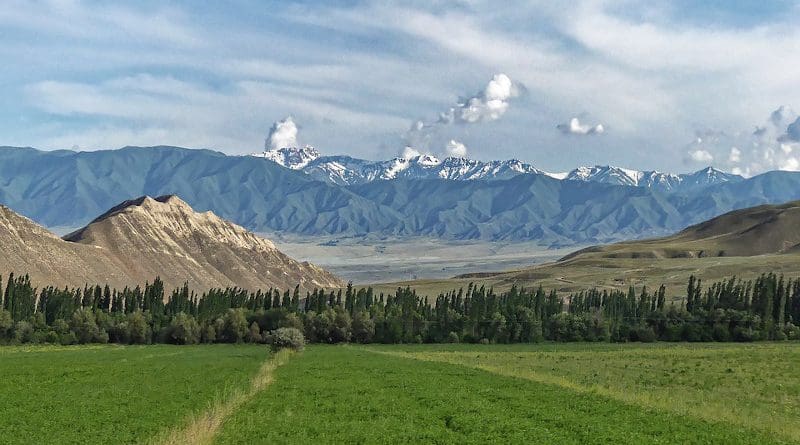Uzbek, Tajik, And Kyrgyz Governors Hold Landmark Forum In Ferghana Valley – Analysis
By RFE RL
By Bruce Pannier*
A meeting occurred in Central Asia on April 23 that hasn’t ever happened before.
The governor of Uzbekistan’s eastern Ferghana Province met with the Tajik and Kyrgyz governors of the adjoining provinces for talks on economic cooperation.
Hosted in the city of Ferghana by Hayrullo Bozorov, the meeting was attended by the governor of Tajikistan’s Sughd Province, Rajabboi Ahmadzoda, and the governor of Kyrgyzstan’s Batken Province, Omurbek Suvanaliev.
Nearly 30 years after the three countries became independent, the meeting marked the first time the heads of the three neighboring provinces had ever gathered for such a meeting.
The three provinces are all in the populous Ferghana Valley, an agriculturally rich area that has also become a major smuggling route and, since independence, has seen more deadly violence along its borders than any other area in Central Asia.
And one of the interesting aspects of the business forum, officially called Integration Of Borders – The Key To Development, is that it was purely about trade and cultural relations, not border demarcation.
Suvanaliev told RFE/RL’s Kyrgyz Service, known locally as Azattyk, that although “the matter of defining the borders is being decided, it is necessary for us also to strengthen economic ties.”
And he made clear that the vital demarcation of the three countries’ borders “is the work of intergovernmental delegations.”
All three governors were accompanied by delegations from local industrial and agricultural businesses and there was also an exhibit of their products.
The only document reportedly signed was a memorandum of cooperation between the Ferghana and Sughd provinces.
It was ironic that the venue for the landmark business forum was the Islam Karimov Theater.
While Karimov was Uzbekistan’s first president, his country set up long barbed-wire fences and dug ditches along extensive stretches of its borders with Kyrgyzstan and Tajikistan. During incursions by Islamic militants in the summer of 2000, Uzbekistan even put land mines at places along its borders with its two eastern neighbors.
When Karimov died late in the summer of 2016, Uzbek troops were occupying some areas of Kyrgyzstan.
His successor, Shavkat Mirziyoev, removed those troops as one of his first moves after becoming Uzbekistan’s leader.
Mirziyoev also reversed Karimov’s policies toward Kyrgyzstan and Tajikistan, and visits by Uzbek officials and business delegations to the neighboring countries are a common occurrence now.
Those meetings have gone a long way towards improving Uzbekistan’s relations with its two neighbors.
The business forum in Ferghana took this new spirit of cooperation a step further by bringing together the representatives of the three countries that share the fertile Ferghana Valley region.
Though the forum did not result in the signing of large amounts of contracts, the big achievement was the meeting itself.
Though there has been some progress in demarcating and marking the borders in the region despite difficult negotiations, the process is likely to continue to be problematic in the years to come as territory is exchanged and people’s property affected.
While border negotiations continue, there is no reason why three of the areas involved in these talks should not move forward by improving economic ties.
The Ferghana business forum was the first step.
And a better economic situation locally should make all three parties more amenable to compromises in their future border negotiations.
- Bruce Pannier writes the Qishloq Ovozi blog and appears regularly on the Majlis podcast for RFE/RL.

